
 Copyright 2014 by Kelsie Besaw All Rights Reserved. No part of this book may be reproduced in any manner without the express written consent of the publisher, except in the case of brief excerpts in critical reviews or articles. All inquiries should be addressed to Skyhorse Publishing, 307 West 36th Street, 11th Floor, New York, NY 10018. Skyhorse Publishing books may be purchased in bulk at special discounts for sales promotion, corporate gifts, fund-raising, or educational purposes. Special editions can also be created to specifications. For details, contact the Special Sales Department, Skyhorse Publishing, 307 West 36th Street, 11th Floor, New York, NY 10018 or info@skyhorsepublishing.com .
Copyright 2014 by Kelsie Besaw All Rights Reserved. No part of this book may be reproduced in any manner without the express written consent of the publisher, except in the case of brief excerpts in critical reviews or articles. All inquiries should be addressed to Skyhorse Publishing, 307 West 36th Street, 11th Floor, New York, NY 10018. Skyhorse Publishing books may be purchased in bulk at special discounts for sales promotion, corporate gifts, fund-raising, or educational purposes. Special editions can also be created to specifications. For details, contact the Special Sales Department, Skyhorse Publishing, 307 West 36th Street, 11th Floor, New York, NY 10018 or info@skyhorsepublishing.com .
Skyhorse and Skyhorse Publishing are registered trademarks of Skyhorse Publishing, Inc. , a Delaware corporation. Visit our website at www.skyhorsepublishing.com . 10 9 8 7 6 5 4 3 2 1 eISBN: 978-1-62873-870-4 Library of Congress Cataloging-in-Publication Data is available on file. ISBN: 978-1-62636-409-7 Printed in China 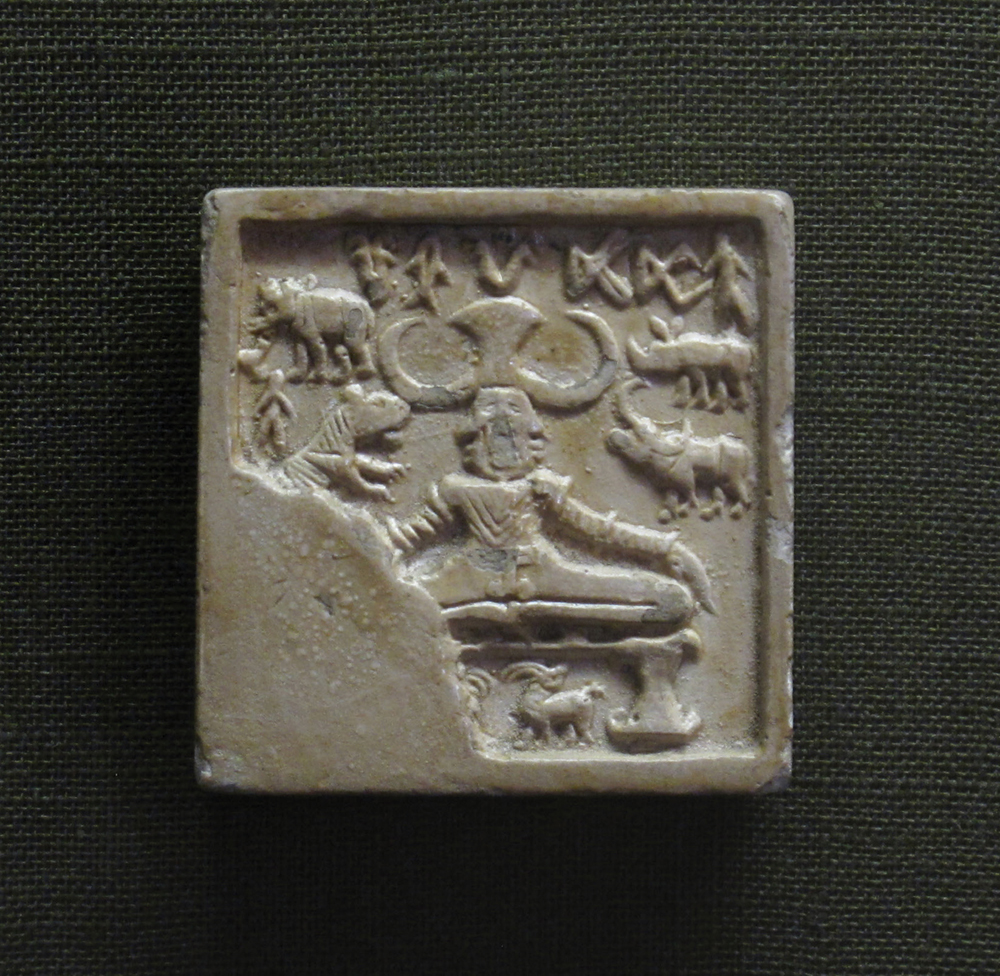 INTRODUCTION A History A precise history of yoga is difficult to pin down. Developed over many millennia, the actual term yoga wasnt seen until its use in the Katha Upanishad , while precursors to the practice of yoga can be seen in multiple ancient sites and texts.
INTRODUCTION A History A precise history of yoga is difficult to pin down. Developed over many millennia, the actual term yoga wasnt seen until its use in the Katha Upanishad , while precursors to the practice of yoga can be seen in multiple ancient sites and texts.
The earliest known instance is in seals found at the archeological site of the Indus Valley Civilization, found in modern-day Pakistan and parts of India, Iran, and Afghanistan. These ancient seals, dating to the third millennium BCE, depict poses similar to modern meditation poses, both sitting and standing. While the practices from the Indus Valley Civilization might not have directly influenced later developments that lead to modern yoga, it is certainly illuminating to see the similarities in the disciplines of practitioners that lived thousands of years ago to those of today. The earliest known texts with references to an early practice similar to yoga are the four Vedas: Rig Veda , Sama Veda , Yajur Veda , and Atharva Veda . The oldest of the four, Rig Veda , is thought to have been first composed in 1500 BCE, coded in 600 BCE, and first written down in 300 BCE. Within the Vedas are ascetic practices and concentration and bodily postures used by the Vedic priests, which resemble what later developed into the practice of yoga.
According to Robert H. Schneider and Jeremy Z. Fields in their book Total Heart Health: How to Prevent and Reverse Heart Disease with the Maharishi Vedic Approach to Health , Yoga asanas were first prescribed by the ancient Vedic texts thousands of years ago and are said to directly enliven the bodys inner intelligence (page 170). A continuation of the Vedas and also known as the Vedanta (the end of the Veda), the Upanishads also included similarities to modern yoga. In fact, the term yoga first appears in the Katha Upanishad , which dates to around 400 BCE. It describes yoga as the steady control of the senses combined with the cessation of mental activity to reach the supreme state.
The Upanishads are a collection of philosophical texts and are at the root of the Hindu religion. There are over 200 recognized Upanishads, the earliest of which is Brihadaranyaka Upanishad , dating to 900 BCE and containing an early reference to meditation. The Bhagavad Gita , a 700-verse scripture that is a part of the Hindu epic Mahabharata , dating to between the fifth and second centuries BCE, contains numerous references to yoga. The entire sixth chapter is dedicated to traditional yoga and meditation practice, and three other forms of yoga are introduced: Karma yoga, which is the yoga of action; Bhakti yoga, which is the yoga of devotion; and J n ana yoga, which is the yoga of knowledge. Also contained in the Mahabharata is the Mokshadharma section in the twelfth chapter, dated between 300 and 200 BCE. The Mokshadharma details an early form of yoga called nirodha-yoga , or the yoga of cessation.
Entering into the last century BCE, we see the development of comprehensive and systematic yoga disciplines. Between 200 BCE and 500 CE, philosophical schools of Buddhism, Jainism, and Hinduism develop ed and gain ed disciples, and yoga disciplines from each school took on a solid structure. The oldest surviving texts from this era are the early Buddhist Pali suttas, which date c. 2917 BCE and give details and instructions on meditative practices and states. The Buddhas ideas about the goal of yoga departed from early beliefs that yoga was a complete cessation of thought; he rather believed that some sort of activity in the mind needed to take place in order to achieve liberation, freedom, from thought. The Yoga Sutras of Patanjali , commonly attributed to Patanjali , are 196 Indian aphorisms that make up the foundation of the discipline of Raja yoga.
There is disagreement between scholars as to their exact date , but it is agreed that they appeared or were compiled between the period of the Maurya Empire (322185 BCE) and 500 CE. Based on the teachings of Samkhya philosophy, which was formed in the first century CE and is the oldest of Indian schools to reach a coherent form, The Yoga Sutras of Patanjali are sometimes referred to as Patanjala Samkhya , due to the fact that they coincide dramatically with the teachings of Samkhya philosophy. The Yoga Sutras detail the eight limbs, or steps, of Ashtanga yoga: Yama (the five abstensions); Niyama (the five observances); Asana (seat, meaning the position used for meditation); Pranayama (suspending breath); Pratyahara (abstraction); Dharana (concentration); Dhyana (meditation); and Samadhi (liberation). The practice and perfection of the first seven limbs creates the ability to achieve Samadhi, which then can be used to navigate through the various layers of consciousness toward the very center of consciousness. The Yoga Yajnavalkya , dated between the second century BCE and the fourth century CE, was influential towards a number of yoga texts that followed it, including Hatha Yoga Pradipika , Yoga Kundalini , and the Yoga Tattva Upanishads . The Yoga Yajnavalkya defined yoga as the union between the individual self and the divine.
Jainism was also quickly developing in the early history of yoga. Tattvarthasutra , from the second century CE, defined yoga as the combination and sum of all of the activities of mind, body, and speech. Fast-forwarding through the early centuries of the Common Era, we come to the Middle Ages, which saw the development of a number of types of yoga and meditation practices, including Hatha yoga, the Bhakti movement, Vajrayana, and Sikhism. The mid-nineteenth century showed a development of interest in yoga practices by Western civilizations. N. C.
Paul published A Treatise on the Yoga Philosophy in 1851, and Swami Vivekananda toured Europe and the United States in the 1890s in order to actively bolster and circulate the aspects of yoga and yoga philosophy. Today, yoga in the West is thought of mainly in its links with asanas (poses) and as a form of exercise. Many yoga experts have come from the East to promote and spread the yoga philosophy throughout the modern era, namely B. K. S. Iyengar, Swami Satchidananda, and Sri Krishna Pattabhi Jois, among many others.
The Wisdom in this Book In the following chapters, you will find wisdom from a multitude of authors, from both antiquity and modernity. Many of these are well-known phrases and bits of advice that have circulated among the community; others will be completely new to you. Dispersed throughout the insightful quotes are a list of styles of yoga and yoga poses that are meant to help you find what works best for you. The quotes have been divided by the wisdom they provide, so that every chapter contains quotes pertaining to its value. Numerous yogis and teachers and practitioners have attempted to define what yoga is or isnt, which has inevitably led to the numerous forms of yoga that are available. The first chapter is a testimony to these many forms of yoga.
Next page
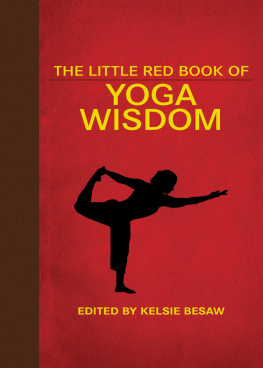

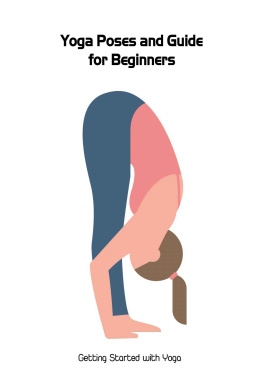
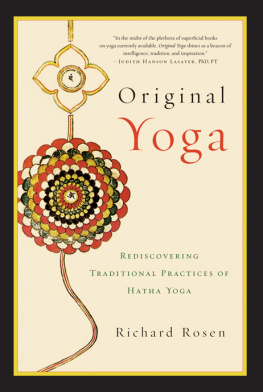

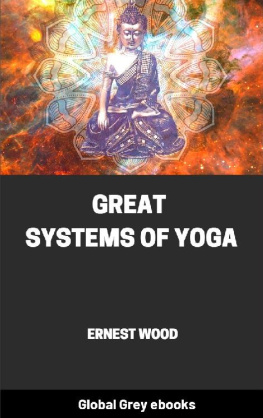
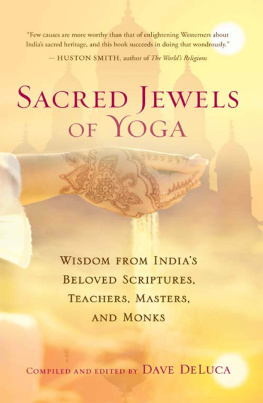
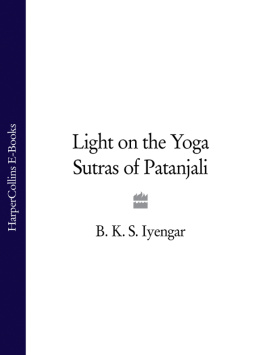

 Copyright 2014 by Kelsie Besaw All Rights Reserved. No part of this book may be reproduced in any manner without the express written consent of the publisher, except in the case of brief excerpts in critical reviews or articles. All inquiries should be addressed to Skyhorse Publishing, 307 West 36th Street, 11th Floor, New York, NY 10018. Skyhorse Publishing books may be purchased in bulk at special discounts for sales promotion, corporate gifts, fund-raising, or educational purposes. Special editions can also be created to specifications. For details, contact the Special Sales Department, Skyhorse Publishing, 307 West 36th Street, 11th Floor, New York, NY 10018 or info@skyhorsepublishing.com .
Copyright 2014 by Kelsie Besaw All Rights Reserved. No part of this book may be reproduced in any manner without the express written consent of the publisher, except in the case of brief excerpts in critical reviews or articles. All inquiries should be addressed to Skyhorse Publishing, 307 West 36th Street, 11th Floor, New York, NY 10018. Skyhorse Publishing books may be purchased in bulk at special discounts for sales promotion, corporate gifts, fund-raising, or educational purposes. Special editions can also be created to specifications. For details, contact the Special Sales Department, Skyhorse Publishing, 307 West 36th Street, 11th Floor, New York, NY 10018 or info@skyhorsepublishing.com . INTRODUCTION A History A precise history of yoga is difficult to pin down. Developed over many millennia, the actual term yoga wasnt seen until its use in the Katha Upanishad , while precursors to the practice of yoga can be seen in multiple ancient sites and texts.
INTRODUCTION A History A precise history of yoga is difficult to pin down. Developed over many millennia, the actual term yoga wasnt seen until its use in the Katha Upanishad , while precursors to the practice of yoga can be seen in multiple ancient sites and texts.